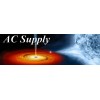Building a model rocket is a great way to see how the real thing happens at a much smaller scale. Because the parallels are so close, it’s important to know the ins and outs of the entire process. It’s a great way to learn and develop an interest in science and engineering. First, you’ll want to start off with knowing the different types of model rocket engines.
Black Powder Engine
Black powder engines are more common than composite. People in the science and rocket fields refer to them as the traditional rocket engine because they’ve been around since the 1950s. When you first see them in their packaging, they’ll look like a roll of quarters, but they have a far better use than currency.
Manufacturers make this engine out of a paper tube with a clay nozzle, a solid pellet of black powder propellant, a smoke charge, and an ejection charge. The designs of these engines mean you only get one use out of them. For additional rocket launching tests, you’ll need to reload with a fresh engine.
The instructions for loading and setting up these engines are easy to follow, but it is important that you stick with the directions down to the last detail. A simple miscalculation or mishap can lead to malfunction and an unsuccessful launch.
Composite Engine
Composite engines are a bit newer on the scene. They have not been around as long as black powder engines but are just as dependable, if not more. They use a propellant similar to the booster engines used for the space shuttle. The propellant is almost three times more powerful than black powder engines.
Composite motors are smaller than black powder motors, so the additional power gives them the same amount of drive as the black powder. Manufacturers designed composite motors to be lighter and smaller for more aerodynamic purposes.
One of the benefits of composite engines is you can purchase them for a single and reloadable use. Here at AC Supply, we have model rocket engines for sale that vary in classification. It’s important to understand motor coding to choose the correct classification for your model rocket.
Classifications
We group rocket engines into different power levels and classify them based on the letters A through Z. From there, the classifications and distinctions get more specific. For example, after assigning a letter to the engine, you’ll further characterize it by its newtons.
Measure the thrust of the engine in newtons. An A engine has power between 1.23 and 2.5 newtons. The value of the letter doubles the amount of power in the engine. Most small engines have full or close to full power or impulse, which is why composites have become so popular.
The various components and distinctions in model rocket engines can get confusing. Luckily for you, here at AC Supply, we can tell you more than just the different types. For more information, visit our website.

-1150x400.jpg)
